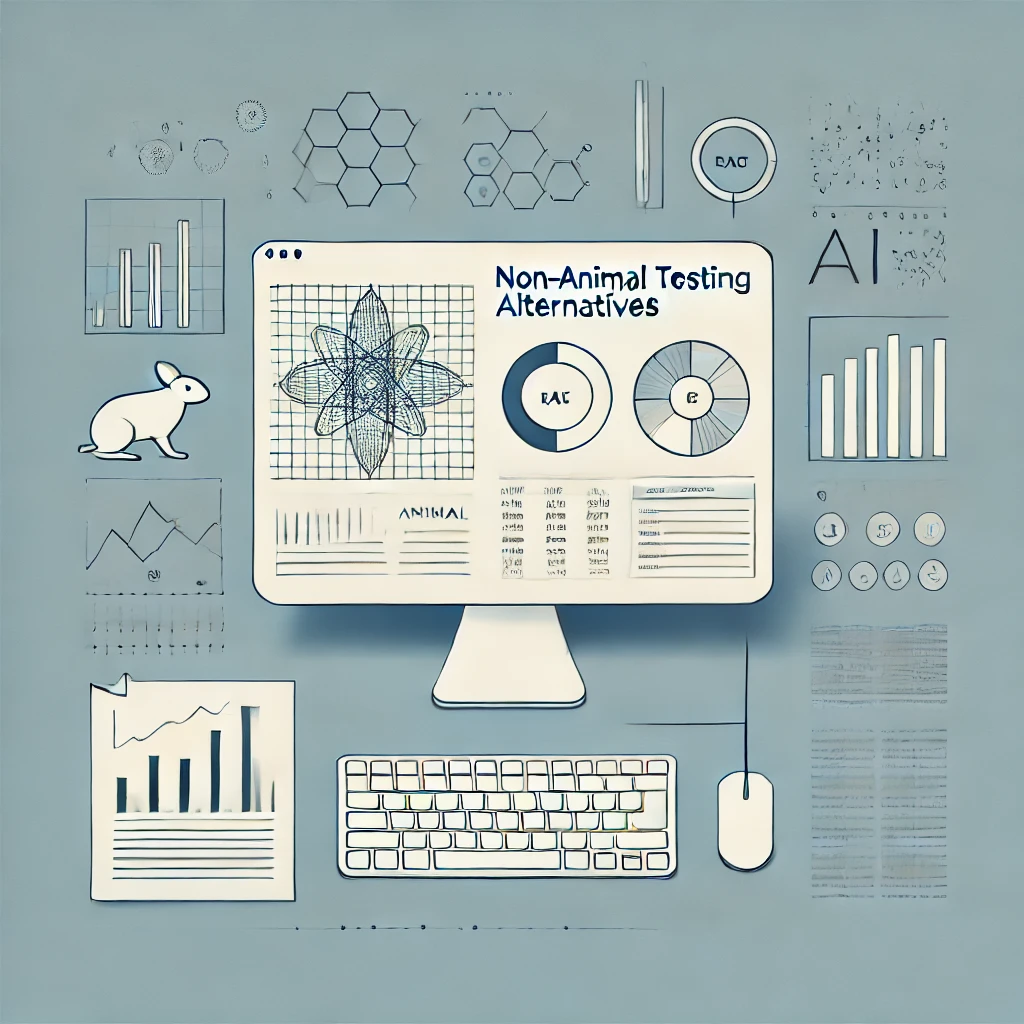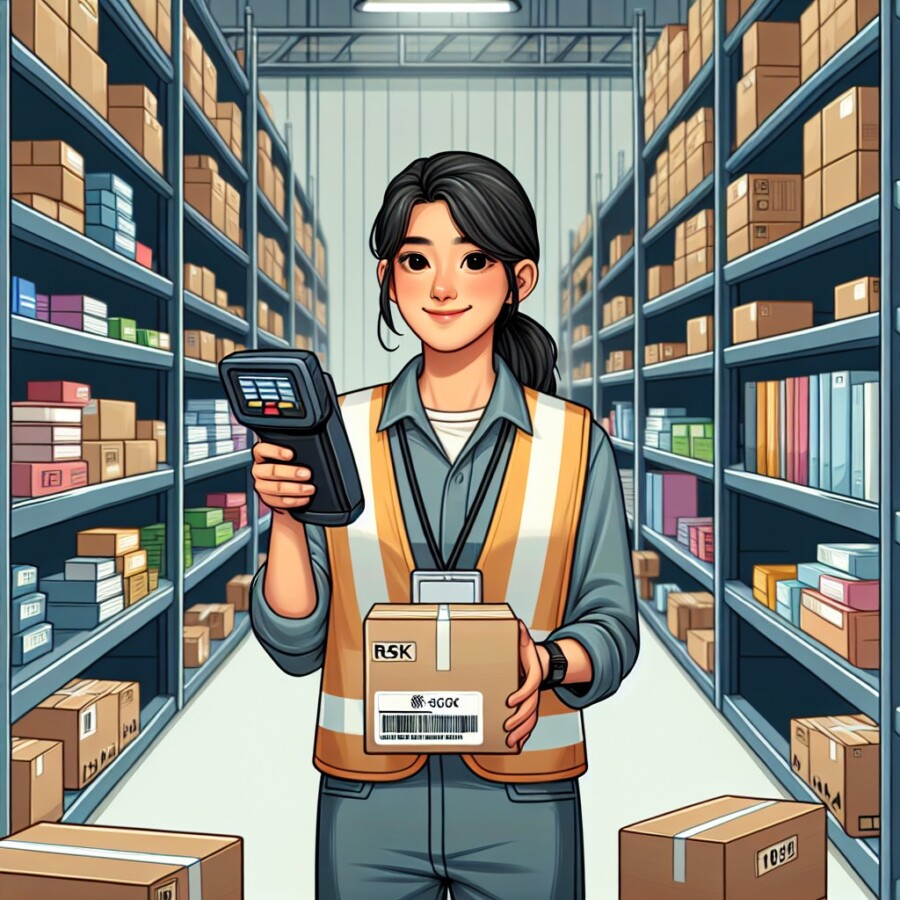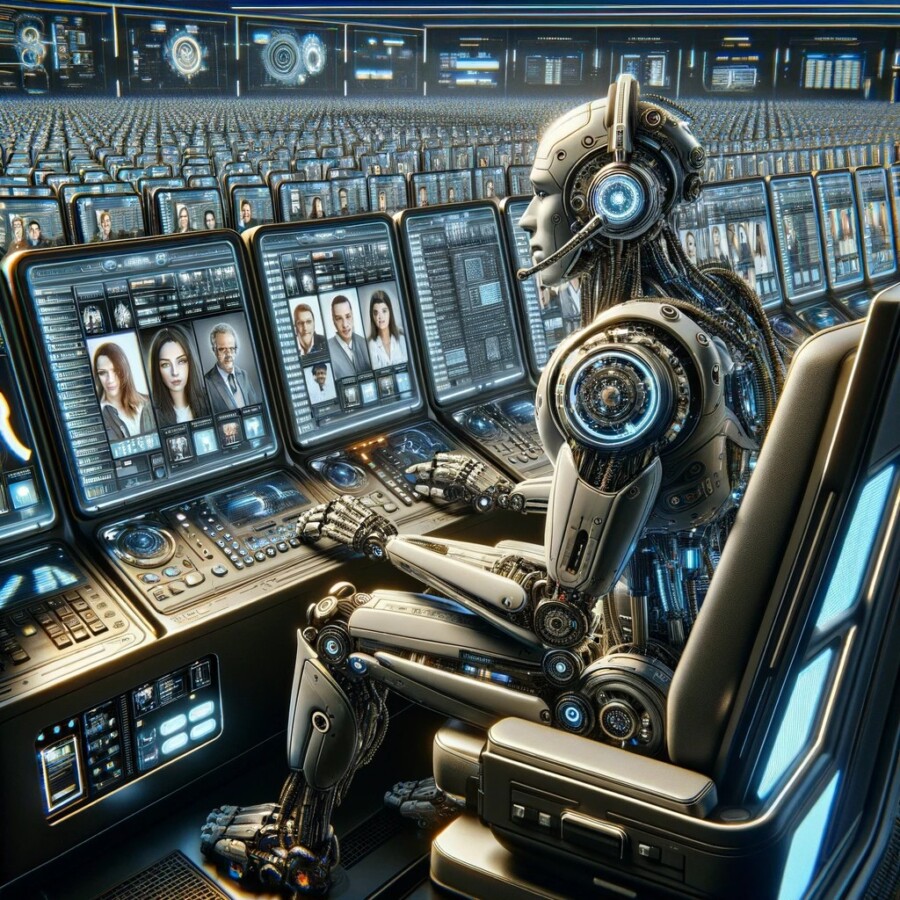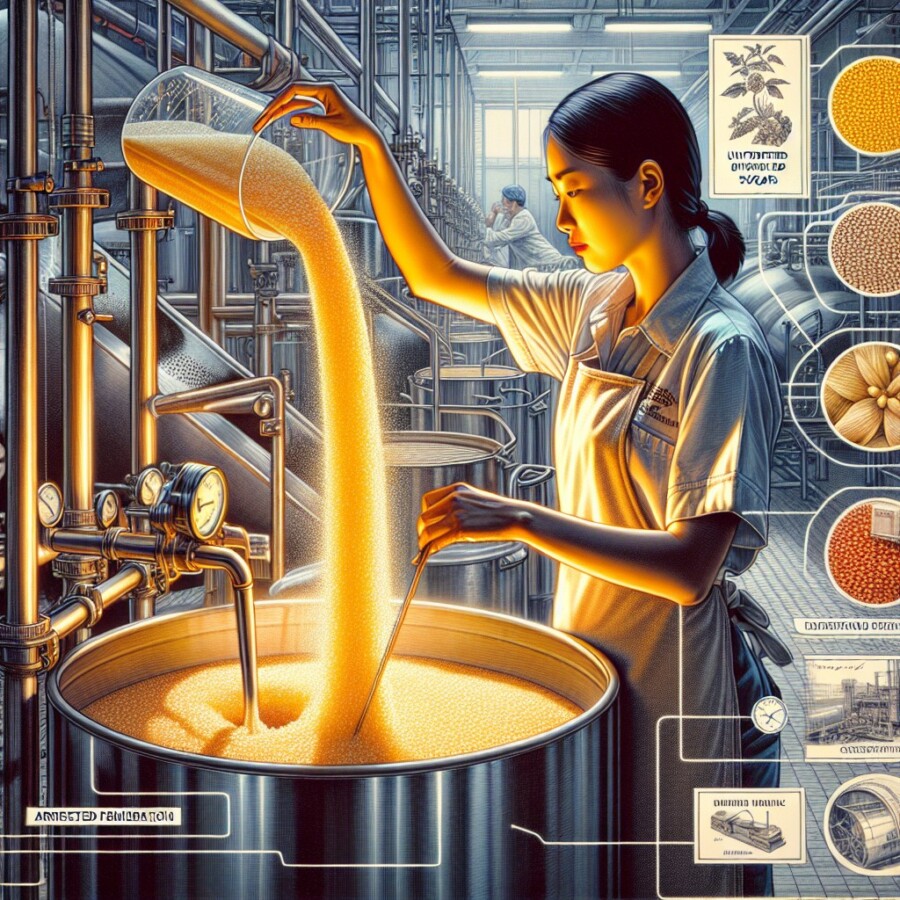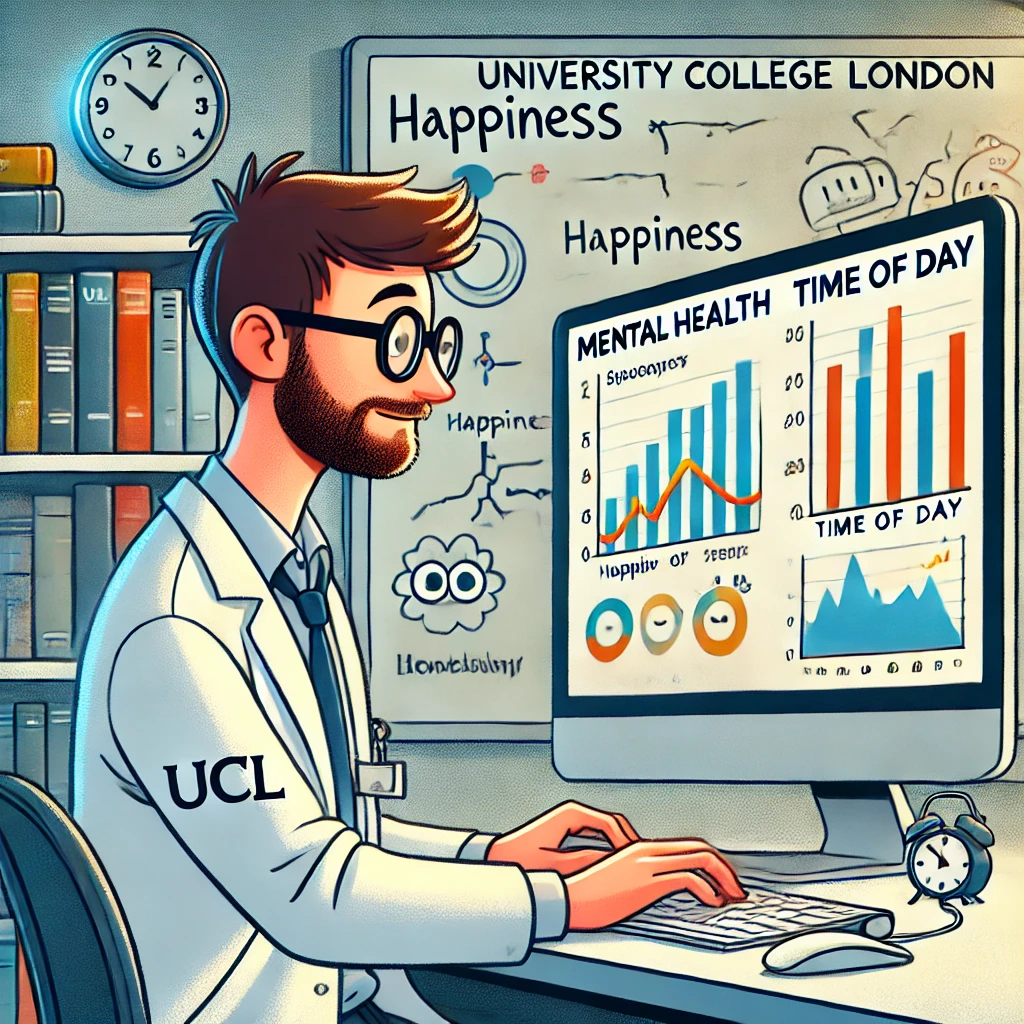Using animals for scientific testing has always been a controversial topic. But now, scientists are looking into using artificial intelligence (AI) as an alternative. AI can analyze existing data from animal tests, which means we might not need to do as many new tests. AI models like ChatGPT can help scientists find and understand the information they need. AI can also help determine if new chemicals are toxic, which is important because there are so many new chemicals being made every year.
AI isn’t perfect, but it’s sometimes more accurate than animal testing. One problem is that AI systems might not work well for everyone. For example, if an AI system is trained on data from one group of people, it might not be good for another group. But animal testing isn’t always reliable either. Sometimes, medicines that pass animal tests end up being dangerous for humans. And some medicines that we use all the time, like aspirin, would have failed animal tests. AI is even being used to create new drugs, which shows how useful it can be.
There are projects like AnimalGAN and Virtual Second Species that are being developed to replace animal testing in the future. AnimalGAN wants to figure out how rats would react to different chemicals without actually testing on them. Virtual Second Species is making an AI-powered virtual dog based on past dog test results. But the big challenge is getting approval from regulators. It might take a while for everyone to agree on using AI instead of animals. Animal testing is seen as old-fashioned, and AI could help us move away from it in the future. But we have to remember that animal testing is still needed for some research, so it won’t go away completely right away.
In conclusion, AI is being used to find alternatives to animal testing in scientific research. It can analyze existing data, figure out if new chemicals are toxic, and even create new drugs. AI testing has its challenges, but it’s sometimes more accurate than animal testing. Projects like AnimalGAN and Virtual Second Species are working towards replacing animal testing in the future. But we need approval from regulators and a step-by-step approach to fully use AI testing.
Original news source: Could AI put an end to animal testing? (BBC)
🎧 Listen:
Slow
Normal
Fast
📖 Vocabulary:
| 1 | controversial | Causing a lot of disagreement or argument |
| 2 | alternative | Something that can be used instead of something else |
| 3 | analyze | To examine something in detail to understand it better |
| 4 | toxic | Poisonous or harmful |
| 5 | reliable | Consistently good in quality or performance; trustworthy |
| 6 | regulators | People who make sure rules and laws are followed |
| 7 | approval | Official permission or agreement |
| 8 | accurate | Correct or exact |
| 9 | virtual | Made to appear to exist by the use of computer software |
| 10 | existing | Already in place or being used |
| 11 | determine | To find out or decide something |
| 12 | chemicals | Substances used in or produced by chemistry |
| 13 | projects | Planned work or activities with a specific goal |
| 14 | developed | Created or made over a period of time |
| 15 | research | Careful study to find and report new knowledge |
Group or Classroom Activities
Warm-up Activities:
– News Summary
Instructions: In pairs or small groups, students will take turns summarizing the main points of the article. They should focus on key information, such as the use of AI in scientific testing, the advantages and disadvantages of AI compared to animal testing, and the development of projects like AnimalGAN and Virtual Second Species. Each group will then share their summary with the class.
– Opinion Poll
Instructions: Students will be divided into pairs or small groups. They will discuss their opinions on using AI as an alternative to animal testing. They should consider the advantages and disadvantages mentioned in the article, as well as any ethical concerns they may have. After their discussion, each group will create an opinion poll with questions related to the topic. They will then survey other groups and record their responses. Finally, each group will present their findings to the class.
– Vocabulary Pictionary
Instructions: In pairs or small groups, students will take turns selecting a vocabulary word from the article. Without saying the word, they will have to draw a picture to represent it. The rest of the group will then try to guess the word based on the drawing. This activity will help students practice and reinforce their understanding of key vocabulary from the article.
– Pros and Cons
Instructions: In pairs or small groups, students will create a list of pros and cons for using AI as an alternative to animal testing. They should consider both the advantages and disadvantages mentioned in the article, as well as any additional points they can think of. After their discussion, each group will share their lists with the class and engage in a class-wide debate, presenting their arguments and counterarguments.
– Future Predictions
Instructions: In pairs or small groups, students will discuss and make predictions about the future of AI in scientific testing. They should consider the potential advancements in AI technology, the development of projects like AnimalGAN and Virtual Second Species, and the challenges mentioned in the article. Each group will then present their predictions to the class and engage in a discussion about the possibilities and implications of using AI in this context.
🤔 Comprehension Questions:
1. What is the controversial topic that scientists are trying to find an alternative for?
2. How can artificial intelligence (AI) help scientists in scientific research?
3. Why is it important to determine if new chemicals are toxic?
4. Why might AI systems not work well for everyone?
5. Why is animal testing sometimes unreliable?
6. How is AI being used to create new drugs?
7. What are AnimalGAN and Virtual Second Species working towards?
8. What are the challenges in fully using AI testing instead of animal testing?
Go to answers ⇩
🎧✍️ Listen and Fill in the Gaps:
Using animals for scientific testing has always been a controversial topic. But now, scientists are looking into using (1)______ intelligence (AI) as an alternative. AI can analyze existing data from animal tests, which means we might not need to do as many new tests. AI (2)______ like ChatGPT can help scientists find and understand the (3)______ they need. AI can also help determine if new (4)______ are toxic, which is important because there are so many new chemicals being made every year.
AI isn’t perfect, but it’s sometimes more accurate than animal (5)______. One problem is that AI systems might not work well for everyone. For example, if an AI system is trained on data from one group of people, it might not be good for another group. But animal testing isn’t always reliable either. Sometimes, medicines that pass animal tests end up being dangerous for humans. And some medicines that we use all the time, like aspirin, would have failed animal tests. AI is even being used to create new drugs, which shows how useful it can be.
There are (6)______ like (7)______ and (8)______ Second Species that are being developed to replace animal testing in the future. AnimalGAN wants to (9)______ out how rats would react to different chemicals without actually testing on them. Virtual (10)______ Species is making an AI-powered (11)______ dog (12)______ on past dog test results. But the big challenge is getting approval from regulators. It might take a while for everyone to agree on using AI instead of animals. Animal testing is seen as old-fashioned, and AI could help us move away from it in the future. But we have to remember that animal testing is still needed for some research, so it won’t go away completely right away.
In conclusion, AI is being used to find alternatives to (13)______ testing in scientific research. It can analyze existing data, figure out if new chemicals are toxic, and even create new drugs. AI testing has its challenges, but it’s sometimes more accurate than animal testing. (14)______ like AnimalGAN and Virtual Second Species are working towards replacing animal testing in the future. But we need (15)______ from (16)______ and a step-by-step approach to fully use AI testing.
Go to answers ⇩
💬 Discussion Questions:
Students can ask a partner these questions, or discuss them as a group.
1. What is animal testing and why is it controversial?
2. How would you feel if you found out that AI could replace animal testing in scientific research?
3. Do you think AI is a better alternative to animal testing? Why or why not?
4. What are some advantages of using AI in scientific research?
5. How do you think AI can help scientists find and understand information?
6. Do you like the idea of using AI to determine if new chemicals are toxic? Why or why not?
7. What are some challenges of using AI in scientific research?
8. How do you think AI can be used to create new drugs?
9. What is AnimalGAN and how does it aim to replace animal testing?
10. How do you think a virtual dog created by Virtual Second Species can replace animal testing?
11. Why do you think it might take a while for everyone to agree on using AI instead of animals in scientific research?
12. Do you think animal testing is old-fashioned? Why or why not?
13. How do you think AI can help us move away from animal testing in the future?
14. Why is it important to have approval from regulators before fully using AI testing?
15. Do you think animal testing will ever go away completely? Why or why not?
Individual Activities
📖💭 Vocabulary Meanings:
Match each word to its meaning.
Words:
1. controversial
2. alternative
3. analyze
4. toxic
5. reliable
6. regulators
7. approval
8. accurate
9. virtual
10. existing
11. determine
12. chemicals
13. projects
14. developed
15. research
Meanings:
(A) Something that can be used instead of something else
(B) To examine something in detail to understand it better
(C) Careful study to find and report new knowledge
(D) Planned work or activities with a specific goal
(E) Correct or exact
(F) Causing a lot of disagreement or argument
(G) Official permission or agreement
(H) Already in place or being used
(I) Substances used in or produced by chemistry
(J) Poisonous or harmful
(K) Made to appear to exist by the use of computer software
(L) To find out or decide something
(M) People who make sure rules and laws are followed
(N) Consistently good in quality or performance; trustworthy
(O) Created or made over a period of time
Go to answers ⇩
🔡 Multiple Choice Questions:
1. What is one advantage of using artificial intelligence (AI) in scientific testing?
(a) AI can analyze existing data from animal tests.
(b) AI can replace all animal testing completely.
(c) AI is always more accurate than animal testing.
(d) AI can only be used for creating new drugs.
2. Why is it important to determine if new chemicals are toxic?
(a) AI models like ChatGPT can help scientists find and understand the information they need.
(b) Animal testing is seen as old-fashioned.
(c) AI systems might not work well for everyone.
(d) There are many new chemicals being made every year.
3. What is one problem with animal testing?
(a) AI systems might not work well for everyone.
(b) AI is sometimes more accurate than animal testing.
(c) Medicines that pass animal tests can be dangerous for humans.
(d) AI can analyze existing data from animal tests.
4. What are AnimalGAN and Virtual Second Species?
(a) AI models that can analyze existing data from animal tests.
(b) Projects being developed to replace animal testing.
(c) Medicines that have passed animal tests.
(d) Chemicals that are toxic to animals.
5. What is the big challenge in replacing animal testing with AI?
(a) Analyzing existing data from animal tests.
(b) Creating new drugs using AI.
(c) Getting approval from regulators.
(d) Figuring out how rats would react to different chemicals.
6. What is one reason why animal testing is still needed for some research?
(a) AI is sometimes more accurate than animal testing.
(b) AI can analyze existing data from animal tests.
(c) AI systems might not work well for everyone.
(d) AI could help us move away from animal testing in the future.
7. What is one advantage of AI testing over animal testing?
(a) AI is always more accurate than animal testing.
(b) AI can create new drugs.
(c) AI can replace all animal testing completely.
(d) AI can analyze existing data from animal tests.
8. What is one potential use of AI in scientific research?
(a) Analyzing existing data from animal tests.
(b) Replacing animal testing completely.
(c) Training AI systems on data from one group of people.
(d) Determining if new chemicals are toxic.
Go to answers ⇩
🕵️ True or False Questions:
1. Animal testing is always reliable, as medicines that pass animal tests can still be dangerous for humans.
2. AI can analyze data from previous animal tests, reducing the need for new tests.
3. AI models like ChatGPT cannot assist scientists in finding and comprehending the information they require.
4. Projects like AnimalGAN and Virtual Second Species aim to implement animal testing in the future, but obtaining approval from regulators is a significant challenge.
5. Scientists are exploring the use of artificial intelligence (AI) as an alternative to using animals for scientific testing.
6. AI can’t help determine the toxicity of new chemicals, which is crucial due to the large number of chemicals being produced each year.
7. AI is being utilized to develop new drugs, demonstrating its usefulness in scientific research.
8. Although AI is not perfect, it can sometimes be more accurate than animal testing.
Go to answers ⇩
📝 Write a Summary:
Write a summary of this news article in two sentences.
Check your writing now with the best free AI for English writing!
Writing Questions:
Answer the following questions. Write as much as you can for each answer.
Check your answers with our free English writing assistant!
1. How can artificial intelligence (AI) be used as an alternative to animal testing?
2. What is one advantage of using AI for testing compared to animal testing?
3. What is one disadvantage of using AI for testing?
4. What are two projects that aim to replace animal testing with AI?
5. Why is it important to get approval from regulators before fully implementing AI testing?
✅ Answers
🤔✅ Comprehension Question Answers:
1. What is the controversial topic that scientists are trying to find an alternative for?
Scientists are trying to find an alternative to using animals for scientific testing.
2. How can artificial intelligence (AI) help scientists in scientific research?
AI can help scientists by analyzing existing data from animal tests, determining if new chemicals are toxic, and even creating new drugs.
3. Why is it important to determine if new chemicals are toxic?
It is important to determine if new chemicals are toxic because there are many new chemicals being made every year, and we need to ensure they are safe for humans and the environment.
4. Why might AI systems not work well for everyone?
AI systems might not work well for everyone because they can be trained on data from one group of people, which might not be representative of other groups.
5. Why is animal testing sometimes unreliable?
Animal testing is sometimes unreliable because medicines that pass animal tests can end up being dangerous for humans, and some medicines that are safe for humans would have failed animal tests.
6. How is AI being used to create new drugs?
AI is being used to create new drugs by analyzing data and identifying patterns that can lead to the discovery of new compounds or combinations of existing drugs that could be effective in treating diseases.
7. What are AnimalGAN and Virtual Second Species working towards?
AnimalGAN and Virtual Second Species are working towards replacing animal testing in the future by using AI to simulate and predict the effects of chemicals on animals without actually testing on them.
8. What are the challenges in fully using AI testing instead of animal testing?
The challenges in fully using AI testing instead of animal testing include getting approval from regulators, ensuring the accuracy and reliability of AI models, and addressing any ethical concerns related to the use of AI in scientific research.
Go back to questions ⇧
🎧✍️✅ Listen and Fill in the Gaps Answers:
(1) artificial
(2) models
(3) information
(4) chemicals
(5) testing
(6) projects
(7) AnimalGAN
(8) Virtual
(9) figure
(10) Second
(11) virtual
(12) based
(13) animal
(14) Projects
(15) approval
(16) regulators
Go back to questions ⇧
📖💭✅ Vocabulary Meanings Answers:
1. controversial
Answer: (F) Causing a lot of disagreement or argument
2. alternative
Answer: (A) Something that can be used instead of something else
3. analyze
Answer: (B) To examine something in detail to understand it better
4. toxic
Answer: (J) Poisonous or harmful
5. reliable
Answer: (N) Consistently good in quality or performance; trustworthy
6. regulators
Answer: (M) People who make sure rules and laws are followed
7. approval
Answer: (G) Official permission or agreement
8. accurate
Answer: (E) Correct or exact
9. virtual
Answer: (K) Made to appear to exist by the use of computer software
10. existing
Answer: (H) Already in place or being used
11. determine
Answer: (L) To find out or decide something
12. chemicals
Answer: (I) Substances used in or produced by chemistry
13. projects
Answer: (D) Planned work or activities with a specific goal
14. developed
Answer: (O) Created or made over a period of time
15. research
Answer: (C) Careful study to find and report new knowledge
Go back to questions ⇧
🔡✅ Multiple Choice Answers:
1. What is one advantage of using artificial intelligence (AI) in scientific testing?
Answer: (a) AI can analyze existing data from animal tests.
2. Why is it important to determine if new chemicals are toxic?
Answer: (d) There are many new chemicals being made every year.
3. What is one problem with animal testing?
Answer: (c) Medicines that pass animal tests can be dangerous for humans.
4. What are AnimalGAN and Virtual Second Species?
Answer: (b) Projects being developed to replace animal testing.
5. What is the big challenge in replacing animal testing with AI?
Answer: (c) Getting approval from regulators.
6. What is one reason why animal testing is still needed for some research?
Answer: (a) AI is sometimes more accurate than animal testing.
7. What is one advantage of AI testing over animal testing?
Answer: (b) AI can create new drugs.
8. What is one potential use of AI in scientific research?
Answer: (d) Determining if new chemicals are toxic.
Go back to questions ⇧
🕵️✅ True or False Answers:
1. Animal testing is always reliable, as medicines that pass animal tests can still be dangerous for humans. (Answer: False)
2. AI can analyze data from previous animal tests, reducing the need for new tests. (Answer: True)
3. AI models like ChatGPT cannot assist scientists in finding and comprehending the information they require. (Answer: False)
4. Projects like AnimalGAN and Virtual Second Species aim to implement animal testing in the future, but obtaining approval from regulators is a significant challenge. (Answer: False)
5. Scientists are exploring the use of artificial intelligence (AI) as an alternative to using animals for scientific testing. (Answer: True)
6. AI can’t help determine the toxicity of new chemicals, which is crucial due to the large number of chemicals being produced each year. (Answer: False)
7. AI is being utilized to develop new drugs, demonstrating its usefulness in scientific research. (Answer: True)
8. Although AI is not perfect, it can sometimes be more accurate than animal testing. (Answer: True)
Go back to questions ⇧



